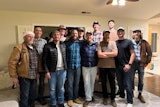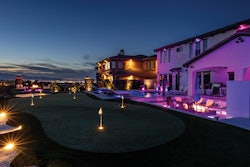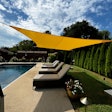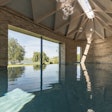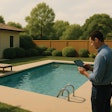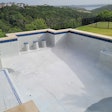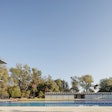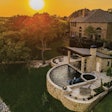
They also convey messages of the human experience: the owners’ sensibilities, taste and experience, personal ambitions, desires for privacy, comfort and excitement. Great designs depict stories about the history of the property, technical innovation and the influence of travel. And, yes, there may even be times when the presence of a pirate ship in the middle of a pool tells its own story about whimsy and the value of childlike imagination.
Some of the best landscape specialists I know often talk about how elements such as a fallen tree placed over a stream tell a story of how a tree grew by the water and at some point fell over and now “participates” in the story as it decays into the scenery. Or how an aged stone wall is overcome by vines and moss, as if the once steadfast structure is now being reclaimed by the landscape. Or how a stream course fights its way through a rock outcropping and over centuries shapes the stone.
On a completely different level, the presence of a lap pool and a spa speaks to the owners’ desire for fitness and relaxation; an herb garden next to an outdoor cooking area reveals something about their love of fine dining and entertaining. I once visited the famed grotto at the Playboy Mansion West and couldn’t help but think, “Oh, if these stones could talk.”
Even the simplest of settings are vested with these kinds of narratives, and the tremendous beauty of it all is how each and every one can be made to express something unique. Consider how a simple garden path leading to a restful place to sit and read tells a story, or how the presence of a bird bath makes its own statement about welcoming nature into the yard.
In this edition of AQUA Architecture, we have a couple of articles that in different ways illustrate what I mean. In “A Writer’s Paradise,” landscape artist Colleen Holmes describes an extensive project designed to capture the clients’ desire for spaces that encourage creativity, celebrate beautiful hillside settings and speak to their cultural heritage. And in “Light Patterns,” David Tisherman discusses how a lighting system is used to accentuate a striking contemporary design that’s influenced by Japanese design traditions.
Quite coincidentally, both projects were done for clients who happen to be successful motion picture and television writers. Not surprising then, that these were clients who by the nature of their careers appreciate the concept of narrative and insisted on those qualities in their homes.
These days, we hear a lot about the concept of experience as the driving factor in a consumer’s decision to invest in pools, spas and other aquatic features. That’s an idea I buy into completely. As my good friend and industry raconteur, Vance Gillette, says, it’s not the pumps and pipes that sell pools but the experience that comes with pool ownership.
Those experiences are all about narratives — ones that tell the story of our lives and often endow our homes with points of pride. In my own garden, for example, we have a statue of Hebe, the Greek goddess of youth and the daughter of Zeus and Hera. It’s a modest piece, set in a wooden nook draped in ivy. Yet I love telling guests how in mythology Hebe was the cupbearer to the Gods charged with serving nectar Ambrosia at the great feasts of Mount Olympus.
Even such a smallish element as that can take on true significance when considered in context of the narrative. (It also says something about the oddball nature of the host who likes to read mythology and tell chimerical stories of gods and goddesses.)
Over my many years writing about aquatic design, landscape architecture and such, I can say that almost without exception, the best works always come with some kind of narrative, some story of nature and humanity that vests the space with a greater meaning and thus makes the experience of being there more meaningful, more memorable and ultimately more important.
Comments or thoughts on this article? Please e-mail [email protected].





















